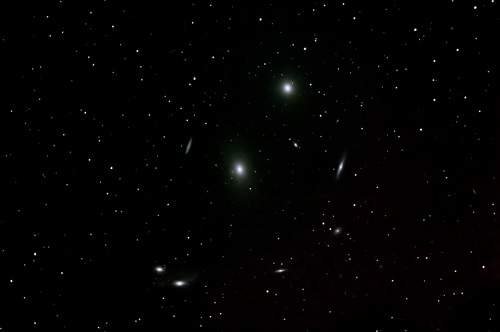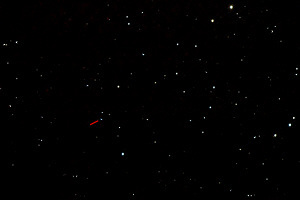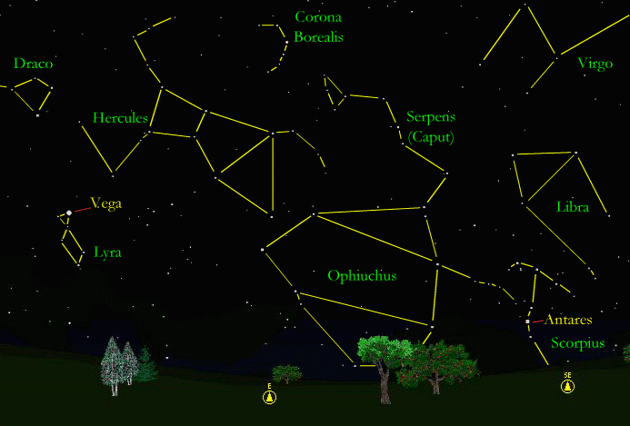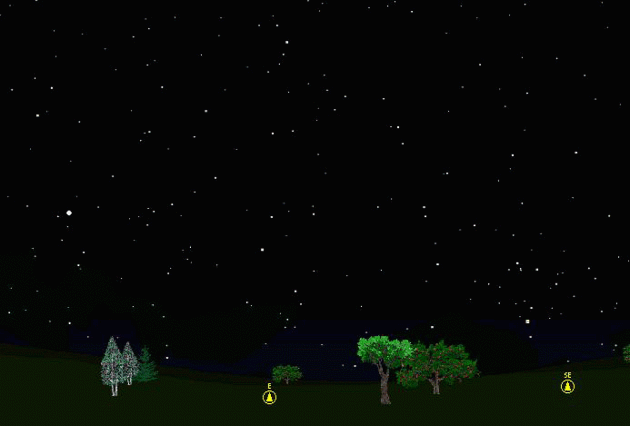The purpose of this feature is to give scout leaders, educators and naturalists an idea of some of the natural events coming up each month. We will try to cover a variety of natural events ranging from sky events to calling periods of amphibians, bird and mammal watching tips, prominent wildflowers and anything else that comes to mind. We will also note prominent constellations appearing over the eastern horizon at mid-evening each month for our area for those who would like to learn the constellations. If you have suggestions for other types of natural information you would like to see added to this calendar, let us know! Note: You can click on the hyperlinks to learn more about some of the featured items. To return to the Calendar, hit the "back" button on your browser, NOT the "back" button on the web page. All charts are downloadable in a "printer friendly" mode, with black stars on a white background. To download them this way, just left click on the chart.
Notes and Images From April 2005
April brings many flowering species, and catkins can be seen on many tree species. Shown at right are Shagbark Hickory catkins and emerging leaves, imaged on April 3rd. We had many neo-tropical migrant birds on our monthly bird survey at Cherokee, North Carolina, with perhaps the highlight being stunning views of a male Blackburnian Warbler on April 22nd. Flying from the shadows to a sunlit branch, its nickname of the "Fire Throat" never seemed more fitting. That night, among tall Red Spruce and beneath a waxing gibbous moon, we heard and saw a Northern Saw-Whet Owl. To hear it, click here. Long-time birders may remember the field guides written by James Lane. Lane had five categories to describe abundance; "Hard to Miss" ,"Should See", "May See", "Lucky to Find" and "How Lucky Can You Get." The last category would probably apply to a view I had of a Scissor-tailed Flycatcher on April 29th. I was commuting home from work driving along Interstate 840 from Murfreesboro towards Triune. Just east of where I-840 passes beneath I-24, I looked to my left (south) to see the flycatcher in flight, and it turned just at the right time for me to get a great look at the scissor tail. Though it shows up periodically, this bird is a rare migrant and nester in Tennessee.
The Virgo Cluster:
"Something Terrible Happened at the Office Today":
On the evening of February 5th, 1963, astronomer Maartin Schmidt was examining the spectrum of the 273rd object in the 3rd Cambridge Catalog of radio sources. These objects were thought to be peculiar stars with spectrums that defied analysis. In a flash of recognition, Schmidt realized he was looking at a normal spectrum whose lines had been Doppler-shifted far towards the red end of the spectrum. For the object to show this amount of red-shifting it must be receding from our galaxy at about 16 percent of the speed of light. This in turn implied that the object was incredibly distant, around 2 billion light years away, and almost inconceivably bright. He had discovered the first Quasi-stellar object, or Quasar. Returning home, he paced the living room floor until his wife asked him what was wrong. He replied, "Something terrible happened at the office today." Quasars are now believed to be the light given off by hot gas spiraling towards a black hole in a distant galaxy nucleus. If you have a 6" or greater aperture telescope, you can see this quasar by putting your telescope on the star beta Virginis (Zavijava), turning off the clock drive, and waiting about 38 minutes for the earth to point your scope at the Quasar. Nikon D70 Camera, 8" f/4 Schmidt-Newtonian telescope.
Sky Events for May 2005: The Eta Aquarid Meteor Shower: This year's Eta Aquarid meteor shower peaks in the early morning hours of May 6th. At our latitude, around 10 meteors per hour may be seen.
Occultation of Antares: The full moon occults Antares, the brightest
star in Scorpius, during the morning hours of May 24th, around 3:00am CDT.
Evening Sky: Brilliant Jupiter, in Virgo, is already about 42 degrees above the eastern horizon at dusk at mid-month. It is about 15 degrees above the bright star Spica. Saturn continues to shine high in the west in Gemini. Look for Venus low in the western sky at dusk at the beginning of the month. It becomes easier to see as the month progresses. As shown in the image below, you can look for Venus below the thin waxing crescent moon about 30 minutes after sunset on May 9th. They should make a striking pair.
Morning Sky: Mars rises around 2:15am CDT at mid-month in Aquarius. The red planet passes close to Uranus around mid-month, and you can use Mars to guide you to the faint gas giant in binoculars. A finder chart is shown at right for May 15th. The green circle shows a typical binocular field of view. After you spot Uranus with binoculars, see if you can pick it out with the naked eye. Even in dark skies it can be somewhat elusive. All times noted in the Sky Events are for Franklin, Tennessee and are Central Daylight Time. These times should be pretty close anywhere in the mid-state area. Constellations: The views below show the sky looking east at 9:30pm CDT on May 20th. The first view shows the sky with the constellation outlined and names depicted. Star and planet names are in yellow. Constellation names are in green. The second view shows the same scene without labels. New constellations this month in the eastern sky are Lyra, the Lyre, with it's bright star Vega, and Ophiuchus, the Serpent Bearer, Libra, the Scales, and the head and upper body of Scorpius, the Scorpion. Look in the southeast for Scorpius and it's bright red star Antares.
On Learning the Constellations: We advise learning a few constellations each month, and then following them through the seasons. Once you associate a particular constellation coming over the eastern horizon at a certain time of year, you may start thinking about it like an old friend, looking forward to its arrival each season. The stars in the evening scene above, for instance, will always be in the same place relative to the horizon at the same time and date each May. Of course, the planets do move slowly through the constellations, but with practice you will learn to identify them from their appearance. In particular, learn the brightest stars (Like Antares and Vega in the above scene looking east), for they will guide you to the fainter stars. Once you can locate the more prominent constellations, you can "branch out" to other constellations around them. It may take you a little while to get a sense of scale, to translate what you see on the computer screen or what you see on the page of a book to what you see in the sky. Look for patterns, like the stars that make up the constellation Hercules. The earth's rotation causes the constellations to appear to move across the sky just as the sun and the moon appear to do. If you go outside earlier than the time shown on the charts, the constellations will be lower to the eastern horizon. If you observe later, they will have climbed higher. As each season progresses, the earth's motion around the sun causes the constellations to appear a little farther towards the west each night for any given time of night. If you want to see where the constellations in the above figures will be on June 15th at 9:00pm CDT, you can stay up till 11:00pm CDT on May 15th and get a preview. The westward motion of the constellations is equivalent to two hours per month. A good book to learn the constellations is H. A. Rey's classic, The Stars, A New Way to See Them. Rey's depictions of the constellations and witty commentary are terrific. A good general reference book on astronomy is the Peterson Field Guide, A Field Guide to the Stars and Planets, by Pasachoff. The book retails for around $14.00. My favorite books about astronomers are Richard Preston's First Light, and the wonderful Starlight Nights, by Leslie Peltier. A good beginners software program for learning the night sky is the Starry Night Beginner program. Visit the Starry Night web site at www.starrynight.com The program retails for around $30.00 and contains a wealth of information.
Amphibians:
By the end of May all of Tennessee's frogs and toads are either calling or have already reached their peak calling period and are being heard less. The treefrogs are the last of our frogs and toads to start calling. Cope's Gray Treefrog and Gray Treefrogs start giving isolated calls as early as March, and by the end of this month listen also for Bird-Voiced Treefrogs, Green Treefrogs and Barking Treefrogs. In May we also hear Fowler's Toads calling frequently, so listen for their "crying baby" call. Northern Cricket Frogs are hitting their stride as well. Listen for a sound like two stones being tapped together. We have heard eight or more species of frogs calling on some May evenings, so it's a great time to listen. Southeastern Chorus Frogs and Northern Spring Peepers continue to call. Listen for their calls to increase in pitch and quicken with the rising temperatures.
Birds: Try to get out with a pair of binoculars in the early morning in the first two weeks of May to take full advantage of the spring migration. The later nesting owls like Eastern Screech Owls are nesting right now. In late May and early June, the young screech owls can sometimes be heard giving their raspy "begging" calls. Easier to hear is a sound that the adult owls make around the young owls, a downward slurred whistle about a half second in duration. This call sounds more like a puppy whimpering than an owl, but you can sometimes follow the sound and come upon a whole group of young screech owls on a tree limb. Recommended: Bird Finding in Tennessee, Michael Lee Bierly. A classic guide to finding birds in Tennessee. The Sibley Guide to Birds, David Allen Sibley The Sibley Guide to Birds of Eastern North America, David Allen Sibley This new Sibley Guide covers only eastern North America, is quite compact, and is less expensive than the larger Sibley. An inexpensive guide for beginners is the Golden Guide for Birds.
Wildflowers: Some of favorite Spring wildflower walks are: The south ridge at the Owl's Hill Nature Center in Brentwood, Tennessee. The Edwin Warner paved loop at the Warner Parks in Nashville or just about any trail in Warner Parks. The greenway at Ashland City, Tennessee. The Angel Falls trail along the Cumberland River at the Big South Fork Recreational Area, near Jamestown, Tennessee. Archives (Remember to use the back button on your browser, NOT the back button on the web page!)
Natural Calendar
February 2005
Natural Calendar
December 2004
Natural Calendar
November 2004
Natural Calendar
September 2004
Natural Calendar
February 2004
Natural Calendar
December 2003
Natural Calendar
November 2003
Natural Calendar
September 2003
Natural Calendar
February 2003
Natural Calendar
December 2002 Natural Calendar November 2002
Nature Notes Archives: Nature Notes was a page we published in 2001 and 2002 containing our observations about everything from the northern lights display of November 2001 to frog and salamander egg masses. Night scenes prepared with Starry Night Pro software All images and recordings © 2005 Leaps
|

 Nestled
along the Lion's tail in the constellation Leo, the galaxies of the
Virgo Cluster ride high in the sky on spring nights. This
image, like the one below it, was made on April 15th. This
group of galaxies is around 70,000,000 light years away. The
brightest galaxies are M86, center, and M84, above and to the right
of M86. Nine bright galaxies can be seen, and a few fainter
ones are visible in the background. An 8" telescope will show
the nine bright galaxies in this image on a clear moonless night.
Though the evening was a little cool, an American Bullfrog called
from our pond, and I heard a Barn Owl twice call overhead. I also
saw my first fireflies of the season this evening. Nikon D70
Camera, 8" f/4 Schmidt-Newtonian telescope.
Nestled
along the Lion's tail in the constellation Leo, the galaxies of the
Virgo Cluster ride high in the sky on spring nights. This
image, like the one below it, was made on April 15th. This
group of galaxies is around 70,000,000 light years away. The
brightest galaxies are M86, center, and M84, above and to the right
of M86. Nine bright galaxies can be seen, and a few fainter
ones are visible in the background. An 8" telescope will show
the nine bright galaxies in this image on a clear moonless night.
Though the evening was a little cool, an American Bullfrog called
from our pond, and I heard a Barn Owl twice call overhead. I also
saw my first fireflies of the season this evening. Nikon D70
Camera, 8" f/4 Schmidt-Newtonian telescope.




